Learn How to Make Perfect Cacio e Pepe at Home with Our Step-by-Step Visual Guide
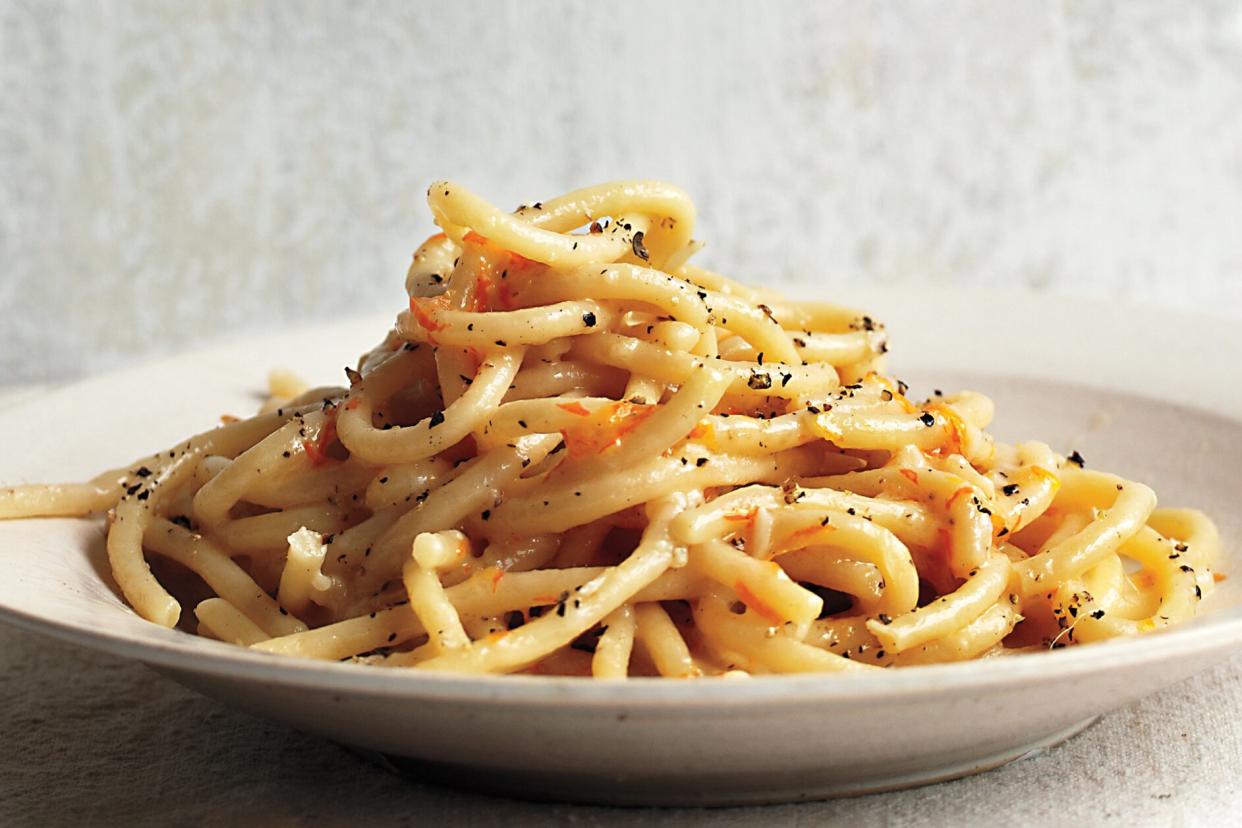
It's one of the most elemental and elegant recipes you can make, and it's also one of the simplest: We're talking about the classic Italian pasta dish cacio e pepe. It translates to cheese and pepper and the dish can be just that—pasta with Pecorino Romano cheese and freshly cracked black pepper.
Yes, it sounds simple, but even the simplest recipes can go wrong. The sauce can be thin and greasy or the cheese can clump rather than melt. Follow our step-by-step guide to get cacio e pepe with a creamy, emulsified sauce coating each strand of pasta. It's totally irresistible—and a dish you'll pull out to impress guests for years.
Related: Get the Cacio e Pepe with Lemon Recipe
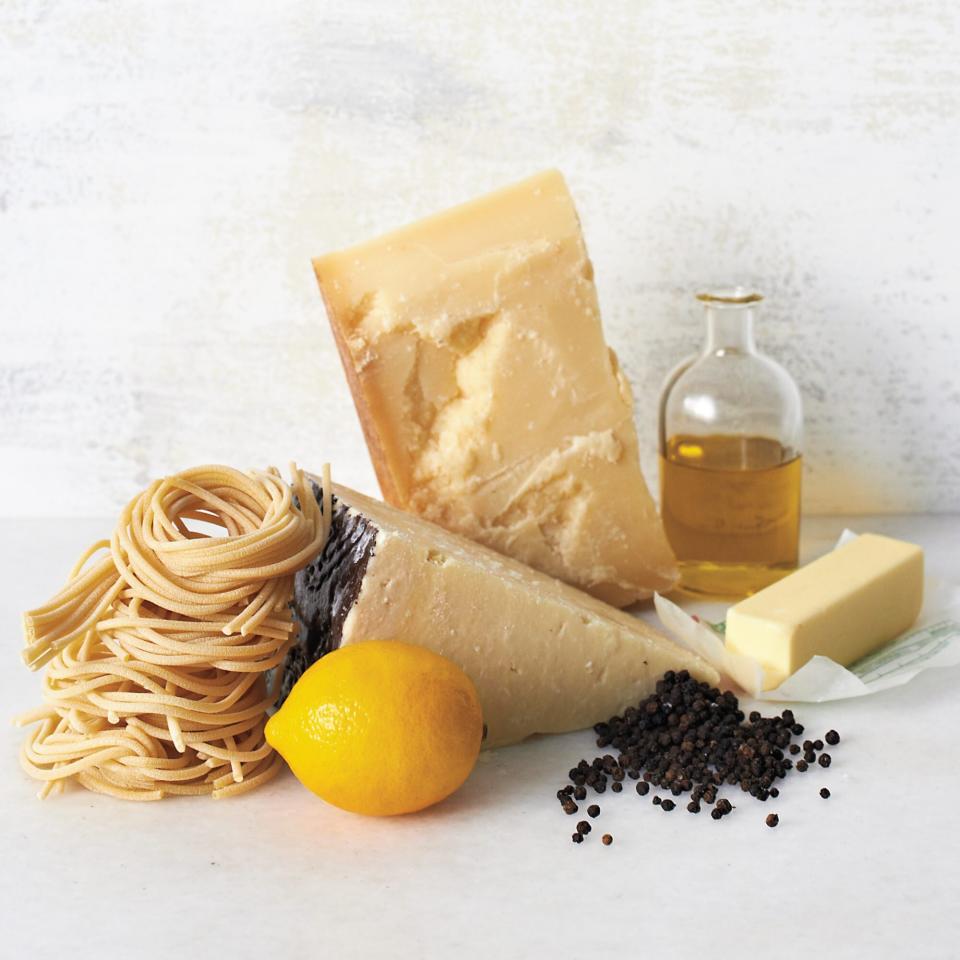
Ingredients
This dish calls for minimal ingredients, but has maximum flavor. The classic version is cheese, pasta, and pepper. Our recipe adds a second type of cheese—plus a touch of butter and olive oil for a silkier sauce that doesn't clump and lemon for brightness.
Pasta
While some classic Italian pasta dishes can be made with a variety of noodles (Bolognese doesn't have to be paired with spaghetti, nor does carbonara), cacio e pepe should be made with either spaghetti or bucatini. This simple dish needs long, thin round noodles to coat.
Cheese
The cheese is where our recipe first deviates from the traditional. Cacio e pepe is said to have originated in Roman times when shepherds took their pasta with them when they moved their sheep to pasture in the spring. They cooked the pasta during the spring and summer months with the cheese they made from their sheep's milk, which would have been a cheese similar to Pecorino Romano.
Today, some cooks prefer to simply toss hot pasta with Pecorino Romano in this age-old way, but our recipe adds Grana Padano. The Pecorino is used to finish the pasta while the Grana Padano is used for a creamy, silky pan sauce; it's a cheese that melts beautifully.
Lemon
We also up the ante by adding the brightness of lemon as a finishing touch. Any type of lemon will work, but a Meyer lemon is particularly nice in this dish. It has a sweeter flavor and aroma, with back notes of orange and lime.
Pepper
The other essential ingredient is plenty of freshly-ground black pepper, which is where the pepe portion of the dish's name comes from.
Related: Our Original One-Pot Pasta Is a Winning Recipe
Technique
Because cacio e pepe is so simple, the technique is important. From intentionally undercooking the pasta to adding the two cheeses at different times, follow our step-by-step guide to make a restaurant-worthy dish for two at home.
1. Start by Undercooking the Pasta
Bring a large pot of generously salted water to a boil. Add the pasta, and cook until very al dente, about two minutes less than called for on the package instructions. Reserve 1 cup of pasta water before draining.

2. Add the Butter and Pasta Water
Transfer pasta to a 12-inch skillet (preferably nonstick). Add butter and 1/2 cup pasta water. Bring to a simmer over medium-high heat. The heat helps the starch in the water meld with the fat from the butter, which prevents the Grana Padano from becoming stringy in the finished dish.
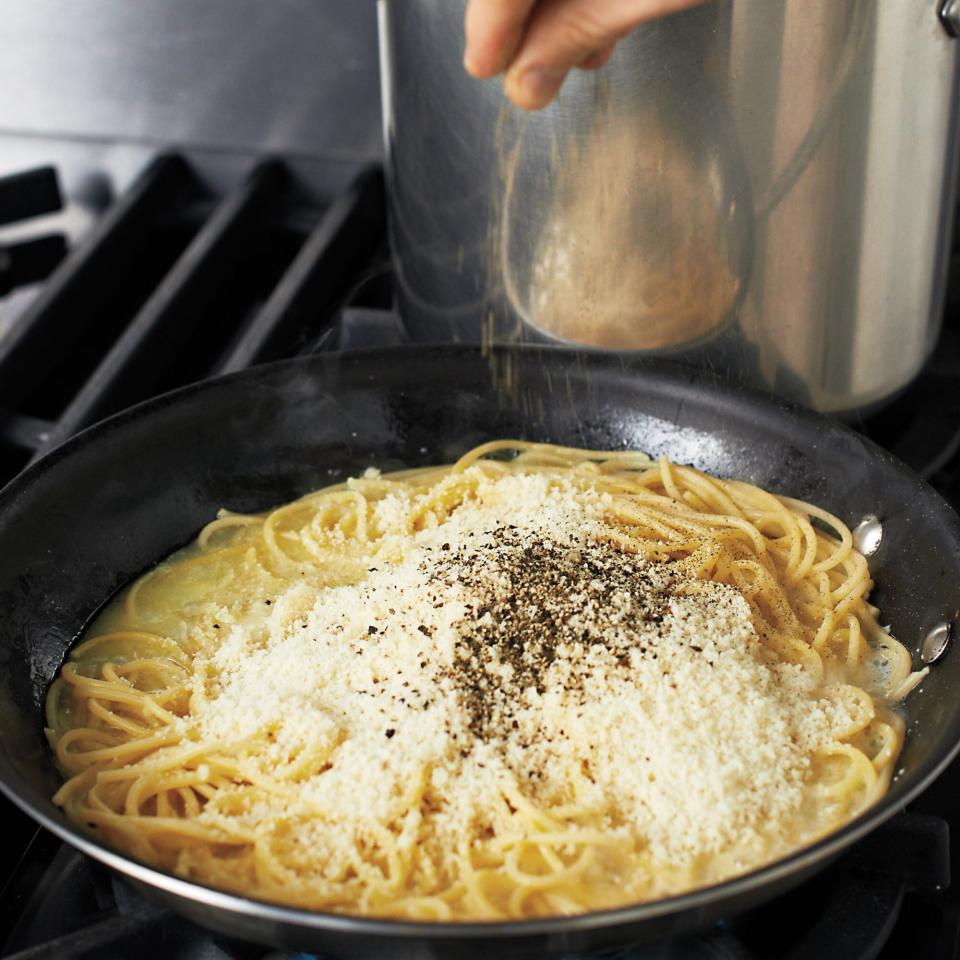
3. Add the Grana Padano Cheese
Reduce heat to low, and mix in the Grana Padano and cracked pepper. Grana Padano is softer than Pecorino Romano; it will melt into the buttery water, creating a sauce as the pasta finishes cooking.
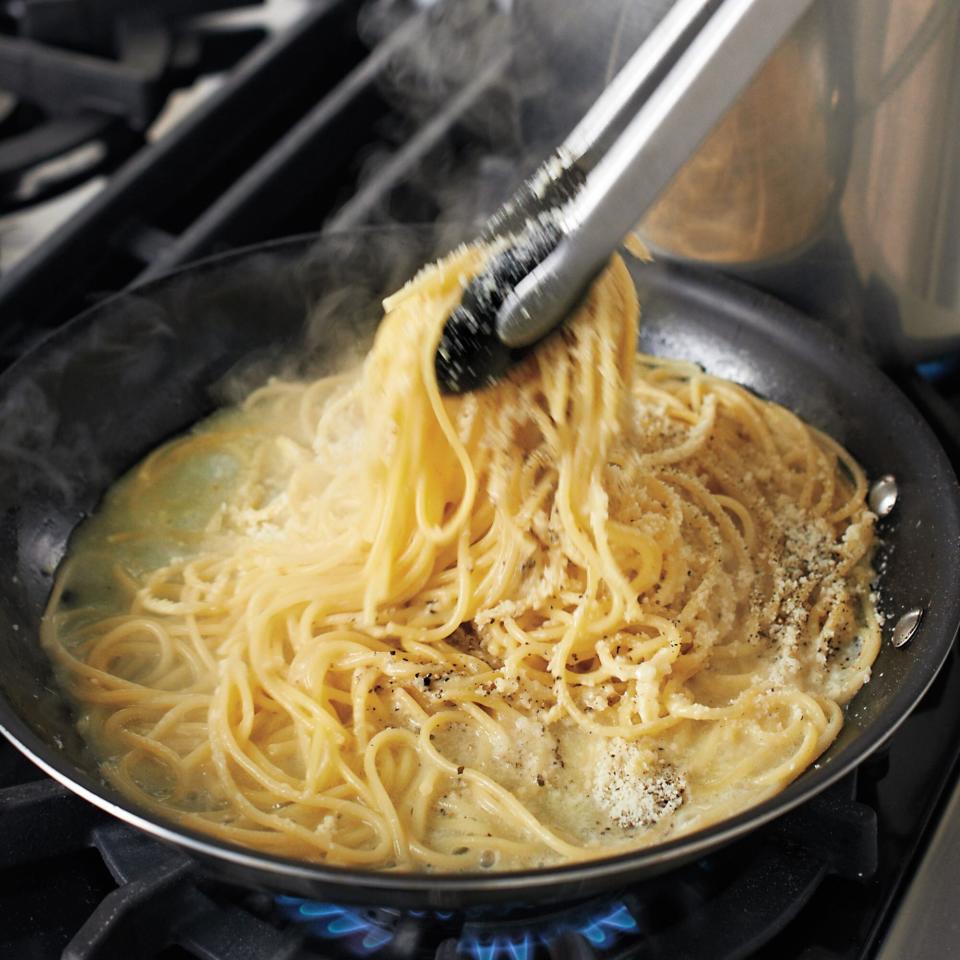
4. Use Tongs to Toss the Pasta
Toss the pasta to thoroughly coat it with sauce—use tongs to do this. As for the technique? It's all in the wrist. Keep everything at a gentle simmer just until the cheese melts and the sauce thickens slightly, about a minute.
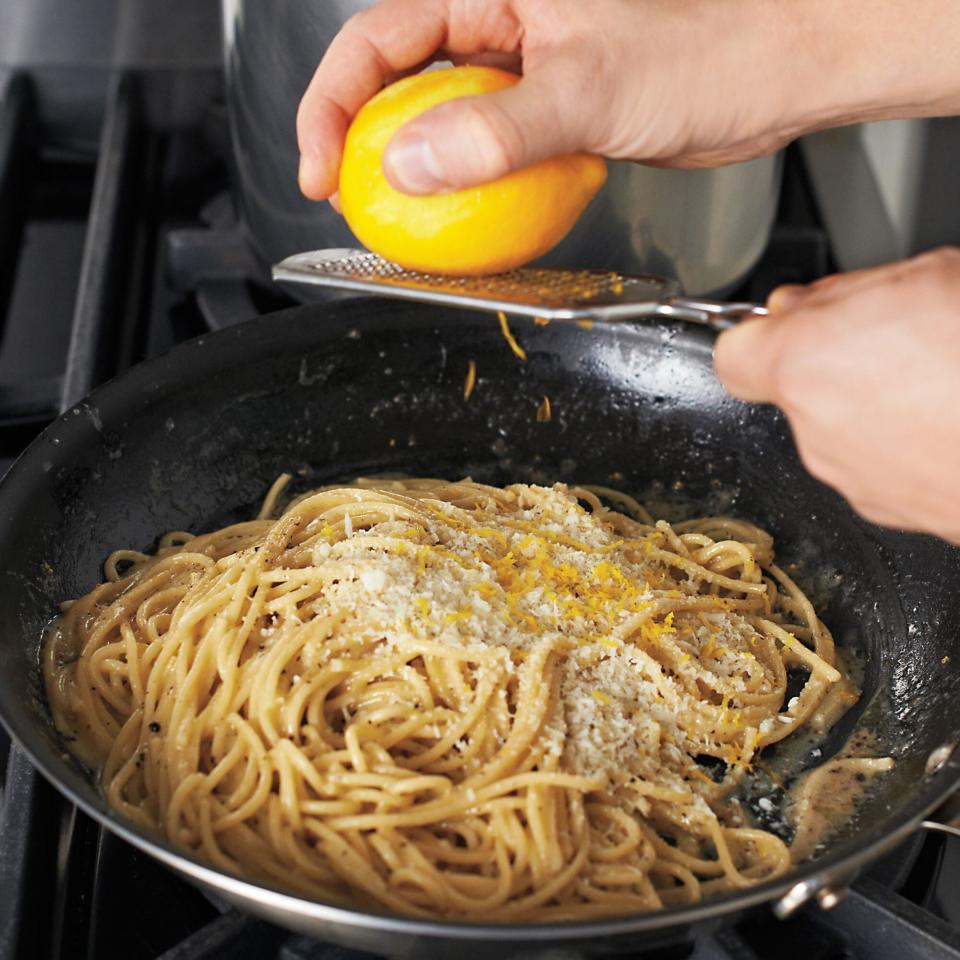
5. Add Pecorino Romano and Lemon Zest as Finishing Touches
Remove the pan from the heat, then stir in the Pecorino Romano. (Always add Pecorino off direct heat; it clumps when cooked.) Zest the lemon over the pasta. If the pasta looks dry, toss it with a bit more pasta water until it has a glossy coating.
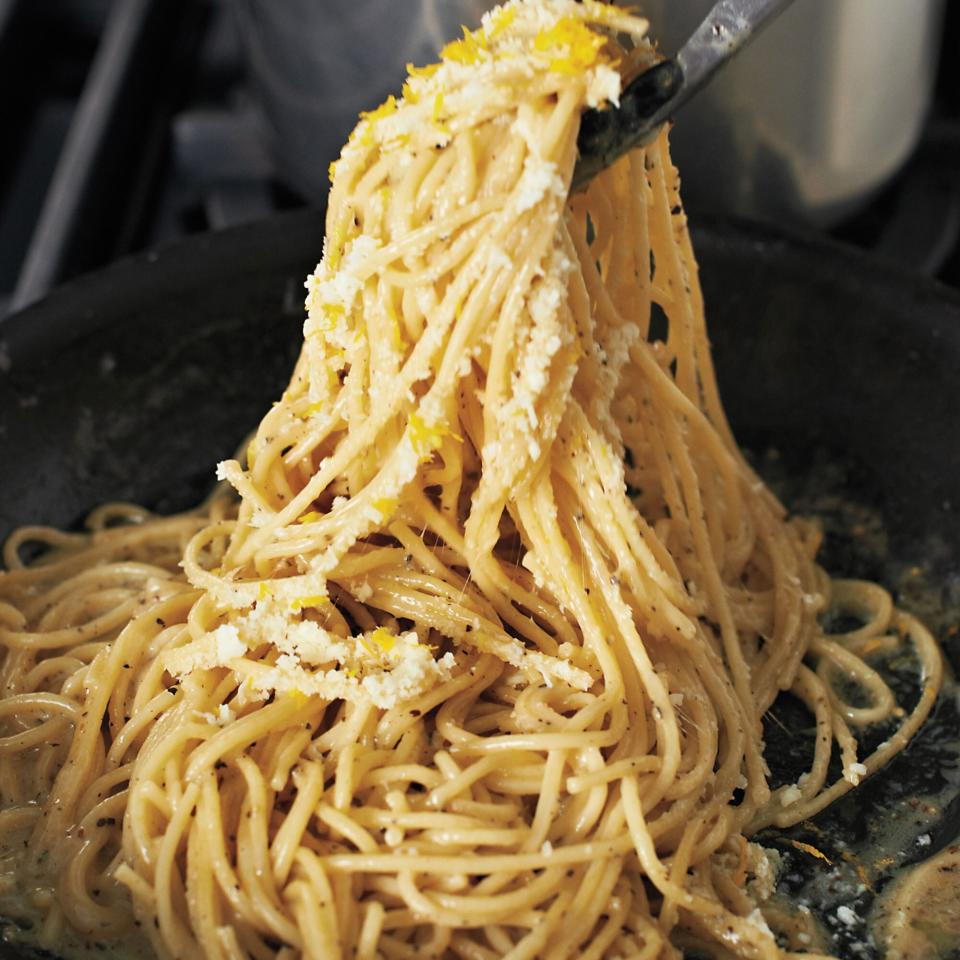
6. Serve
Use tongs to divide the pasta between two warm bowls. Drizzle each portion with olive oil and lemon juice, and garnish with more cracked pepper. Serve immediately.

